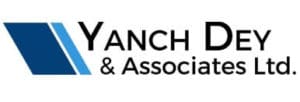A consumer proposal calculator helps you estimate what your monthly payment may be, based on your income, household expenses, and total debt.
The calculator gives you a general idea of how much you might save, how long the proposal may last, and how affordable your monthly payment could be.
Most people are surprised to learn that a proposal often reduces their debt by about 70% while keeping payments low and predictable.
A consumer proposal calculator gives you a simple estimate of your monthly payment. It helps you understand what your debt could look like after reductions, how long the proposal might last, and whether the offer fits your budget. The calculator usually considers:
- Your total unsecured debt, including credit cards, taxes, loans, and collections, to estimate the amount you may need to repay.
- Your income and household expenses, which help determine what creditors will reasonably accept.
- Your family size and living situation, which affect how much room you have in your budget.
- Any assets you own, because bankruptcy value plays a small role in proposal calculations.
Typical acceptance rates, since creditors generally accept proposals that offer more than they would recover in bankruptcy. These details come together to create a realistic estimate of what your proposal could look like.
What the Calculator Does Not Do
The calculator provides an estimate, but it cannot replicate the full legal calculation done by a Licensed Insolvency Trustee. It does not:
- Assess your full financial picture, such as variable income or shared household expenses.
- Include creditor voting patterns, which trustees understand from experience.
- Account for CRA guidelines, which may require slightly different offers depending on the tax years involved.
- Analyze assets that increase bankruptcy value, which affects the minimum required offer.
- Factor in support payments, income fluctuations, or business income.
This is why a trustee provides a precise calculation after reviewing your full financial details.
Why Consumer Proposal Payments Are Often Lower Than Expected
Many people think their payments will be high, but proposals focus on what you can realistically afford. Payments are often lower because:
- Interest stops immediately, so every dollar goes toward your settlement instead of penalties.
- Only a portion of your debt is repaid, usually around 20% to 35% depending on your situation.
- Your payment is based on your budget, not on your total debt balance.
Creditors prefer proposals, because they recover more than they would in bankruptcy. Your income, not your debt size, has the biggest impact on the final payment. This is why estimates often surprise people in a positive way.
How Much You Can Expect to Save
A consumer proposal often reduces debt by about 70%, depending on income and creditor guidelines. Your savings come from:
- Interest and penalties being eliminated, so your debt stops growing.
- Only repaying a fraction of what you owe, which lowers your monthly payment significantly.
- A fixed payment over up to five years, allowing you to spread the cost out evenly.
- A settlement amount based on affordability, not on creditor pressure.
- The ability to pay off early, which can reduce total time and stress.
These savings make proposals one of the most affordable debt-relief options in Canada.
Why Speak With a Trustee After Using the Calculator
The calculator gives you a starting point, but only a Licensed Insolvency Trustee can confirm your exact payment. Speaking with a trustee is helpful because:
- They calculate your proposal using legal formulas, not estimates.
- They review your full budget, ensuring the payment fits your lifestyle.
- They know how creditors vote, helping your proposal get accepted.
- They prevent mistakes, like under- or over-estimating your budget.
- Their advice is free, with no obligation to move forward.
This ensures your proposal is accurate and realistic.










